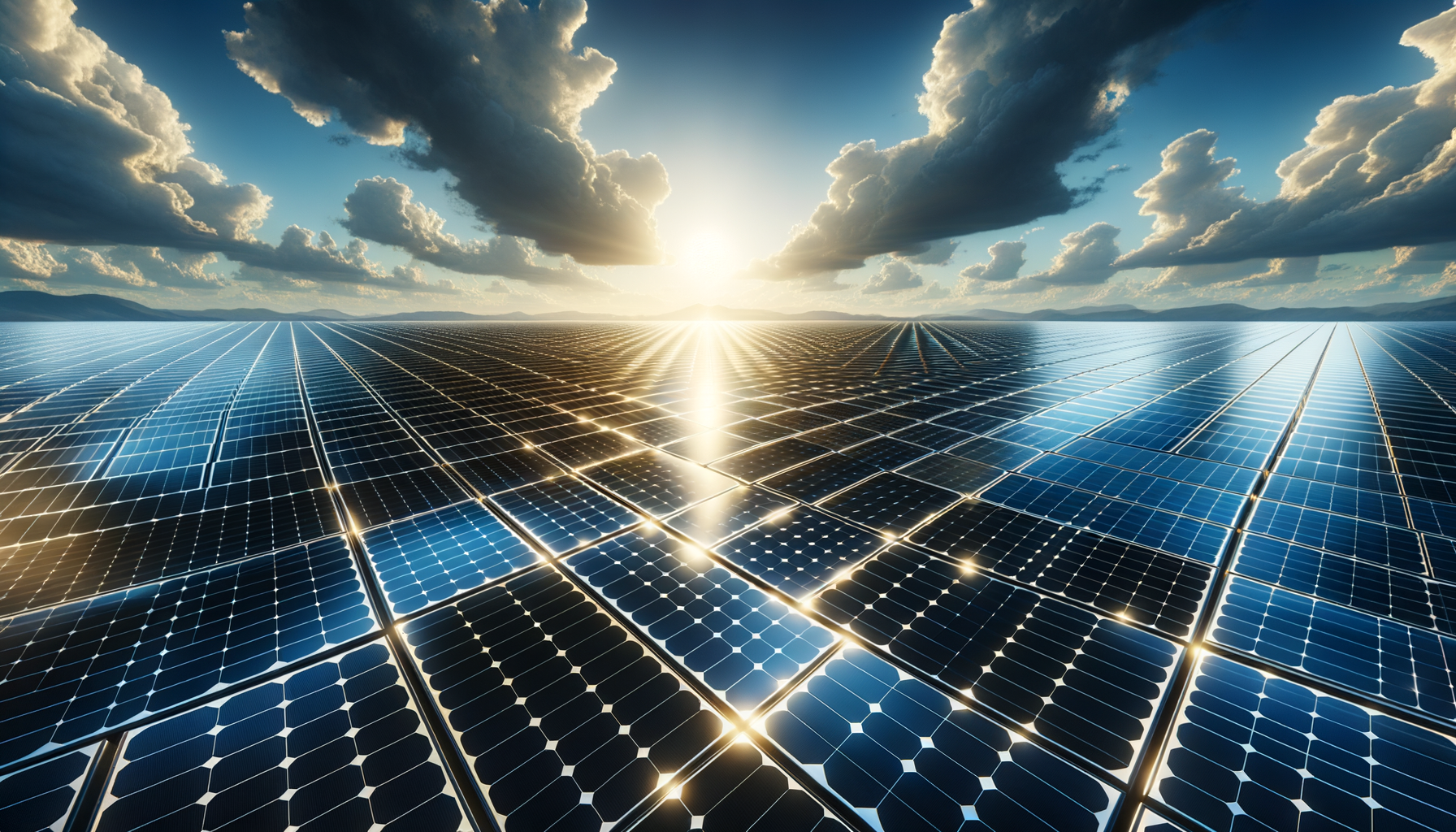Single-Crystal Strength: Exploring Monocrystalline Solar Panels
Mono crystalline solar panels are a leading technology in the solar energy industry known for their high efficiency and longevity. Made from single-crystal silicon, these panels convert sunlight into electricity with remarkable effectiveness compared to other solar panel types.

Introduction to Monocrystalline Solar Panels
In the modern quest for sustainable energy solutions, solar power stands out as a prominent player. Among the various types of solar technologies available, mono crystalline solar panels have carved a niche for themselves due to their exceptional efficiency and longevity. These panels, crafted from single-crystal silicon, offer a sophisticated method of converting sunlight into electricity. With the increasing global emphasis on renewable energy, understanding the intricacies of monocrystalline panels becomes essential for both consumers and industry professionals.
Monocrystalline solar panels are renowned for their high efficiency rates, which typically range from 15% to 20%. This efficiency is attributed to the purity of the silicon used in their production. The single-crystal structure allows electrons more freedom to move, thereby enhancing the conversion of sunlight into electricity. As the demand for clean energy continues to grow, these panels are becoming a preferred choice for both residential and commercial installations.
Manufacturing Process and Material Composition
The manufacturing process of monocrystalline solar panels is both intricate and fascinating. It begins with the Czochralski process, where a single crystal seed is dipped into molten silicon and slowly drawn out, forming a cylindrical ingot. This ingot is then sliced into thin wafers, which are used to create the solar cells. The precision required in this process ensures the high quality and efficiency of the final product.
The material composition of monocrystalline panels is another factor that contributes to their outstanding performance. Made from high-purity silicon, these panels exhibit a uniform color and texture, which is indicative of their superior quality. The single-crystal structure minimizes defects and enhances the electrical conductivity of the cells, making them highly effective in energy conversion.
Key advantages of this manufacturing process include:
- High energy conversion efficiency
- Durability and long lifespan
- Consistent performance even in low-light conditions
Efficiency and Performance in Various Conditions
One of the defining features of monocrystalline solar panels is their remarkable efficiency. These panels perform exceptionally well under direct sunlight, but their efficiency also extends to less-than-ideal conditions. For instance, they maintain a significant level of performance even on cloudy days or in shaded areas, making them a versatile option for various environments.
In comparison to other solar technologies, monocrystalline panels offer superior performance in terms of energy output per square meter. This makes them an excellent choice for installations where space is limited. Additionally, their ability to perform well in both hot and cold climates adds to their versatility, making them suitable for a wide range of geographical locations.
Performance benefits of monocrystalline panels include:
- High power output per area
- Consistent performance across different weather conditions
- Reduced impact of shading on overall efficiency
Cost Considerations and Economic Impact
While monocrystalline solar panels are known for their efficiency, they also come with a higher price tag compared to other types of solar panels, such as polycrystalline and thin-film panels. This cost is largely due to the complex manufacturing process and the high purity of silicon required. However, the long-term benefits often outweigh the initial investment.
From an economic perspective, investing in monocrystalline panels can lead to significant savings over time. Their high efficiency means that fewer panels are needed to generate the same amount of electricity, reducing installation costs. Additionally, their durability and long lifespan minimize maintenance expenses, providing a reliable return on investment.
Economic advantages include:
- Long-term savings on energy bills
- Reduced need for frequent replacements or repairs
- Potential eligibility for government incentives and rebates
Future Prospects and Technological Advancements
The future of monocrystalline solar panels looks promising, with ongoing research and technological advancements aimed at further enhancing their efficiency and reducing production costs. Innovations in materials science and manufacturing techniques are expected to drive down prices, making these panels more accessible to a broader audience.
Additionally, the integration of smart technologies and energy storage solutions is set to revolutionize the solar industry. Monocrystalline panels, with their high efficiency, are well-suited to work in tandem with these advancements, offering consumers a comprehensive and sustainable energy solution.
Looking ahead, the focus will likely be on:
- Improving efficiency and reducing manufacturing costs
- Integrating with smart home and grid technologies
- Expanding the adoption of solar energy globally